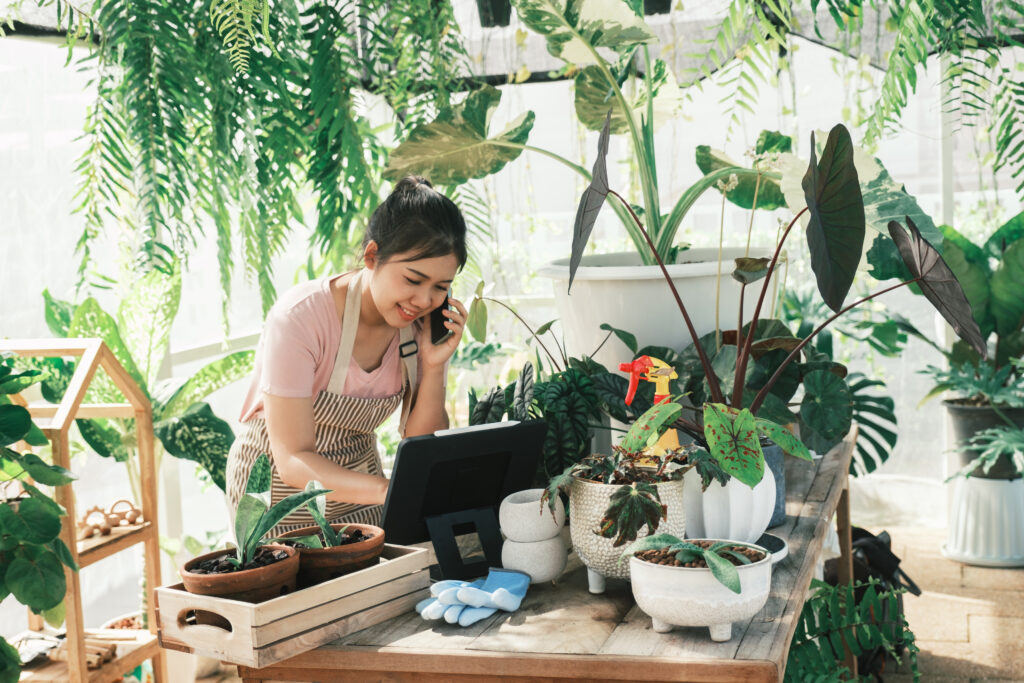A dedicated indoor garden work station is essential for any serious plant enthusiast. It provides a organized space for potting, propagation, and plant maintenance while keeping your home clean and your supplies readily accessible. This guide will help you create the perfect work station that meets all your indoor gardening needs.
Planning Your Work Station
Space Requirements
Consider these factors:
- Minimum 4×2 feet work surface
- Storage space underneath
- Vertical storage options
- Access to water
- Proper ventilation
- Adequate lighting
Location Selection
Ideal characteristics:
- Natural light availability
- Water source proximity
- Easy cleanup access
- Climate control
- Electrical outlets
- Floor protection
Essential Components

Work Surface
Recommended features:
- Water-resistant material
- Easy-to-clean surface
- Sturdy construction
- Comfortable height
- Raised edges
- Non-slip coating
Storage Solutions
Organize supplies with:
- Pull-out drawers
- Open shelving
- Tool hangers
- Supply bins
- Label systems
- Stack containers
Tool Organization
Essential Tools
Keep these readily available:
- Pruning shears
- Hand trowels
- Moisture meter
- Spray bottles
- Plant markers
- Small rake
- Scissors
Storage Systems
Efficient organization:
- Magnetic strips
- Pegboard walls
- Tool caddies
- Drawer dividers
- Hook systems
- Rolling carts
Potting Station Setup
Basic Requirements
Include these elements:
- Soil storage bin
- Mixing area
- Pot storage
- Drainage tray
- Water access
- Cleanup tools
Soil Management
Organization tips:
- Covered containers
- Moisture control
- Different mixes
- Measuring tools
- Amendment storage
- Sifting station
Lighting Solutions
Task Lighting
Options include:
- Adjustable desk lamp
- Overhead lights
- Grow lights
- Natural light
- Under-shelf lighting
- Magnifying lamp
Plant Growing Lights
Features needed:
- Adjustable height
- Timer controls
- Various spectrums
- Heat management
- Energy efficiency
- Coverage area
Water Management
Water Station
Essential features:
- Small sink or basin
- Spray attachment
- Filter system
- Drainage solution
- Water storage
- Testing equipment
Cleanup Solutions
Maintain cleanliness with:
- Absorbent mats
- Cleanup tools
- Waste bin
- Drying rack
- Sanitizing supplies
- Floor protection
Propagation Area
Setup Requirements
Necessary elements:
- Humidity domes
- Heat mats
- Growing medium
- Label system
- Monitoring tools
- Storage space
Environmental Control
Maintain optimal conditions:
- Temperature gauge
- Humidity monitor
- Air circulation
- Light control
- Moisture levels
- Heat regulation
Storage Solutions
Supply Organization
Categorize items:
- Pots and containers
- Soil and amendments
- Tools and equipment
- Plant care products
- Seeds and bulbs
- Reference materials
Vertical Storage
Maximize space with:
- Wall-mounted shelves
- Hanging organizers
- Stackable containers
- Door-mounted systems
- Rolling carts
- Pegboard walls
Safety Features
Personal Protection
Keep these accessible:
- Safety glasses
- Work gloves
- Dust mask
- First aid kit
- Eye wash
- Hand sanitizer
Equipment Safety
Ensure proper:
- Tool maintenance
- Electrical safety
- Chemical storage
- Ventilation
- Fire safety
- Spill control
Workspace Ergonomics
Comfort Features
Include these elements:
- Adequate lighting
- Proper height surface
- Anti-fatigue mat
- Seating option
- Tool accessibility
- Good ventilation
Efficiency Layout
Organize by:
- Frequency of use
- Work flow
- Height zones
- Reach distances
- Task grouping
- Storage access
Creating a functional indoor garden work station is an investment in your gardening success. The key is to design a space that works for your specific needs while maintaining organization and efficiency. Remember to include adequate storage, proper lighting, and easy access to water and tools. With a well-planned work station, you’ll find that indoor gardening tasks become more enjoyable and productive, allowing you to focus on nurturing your plants rather than searching for supplies or cleaning up messes.




